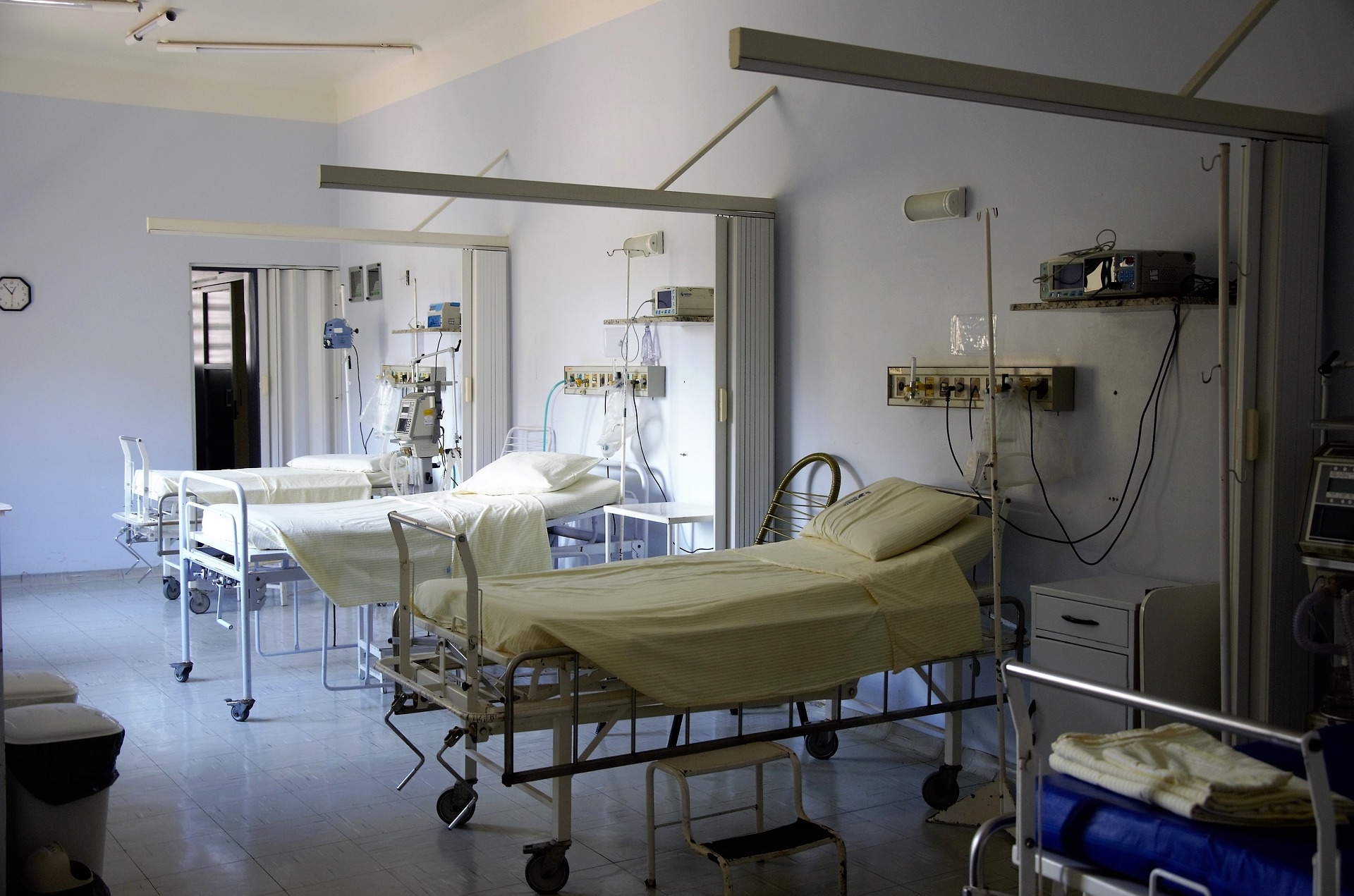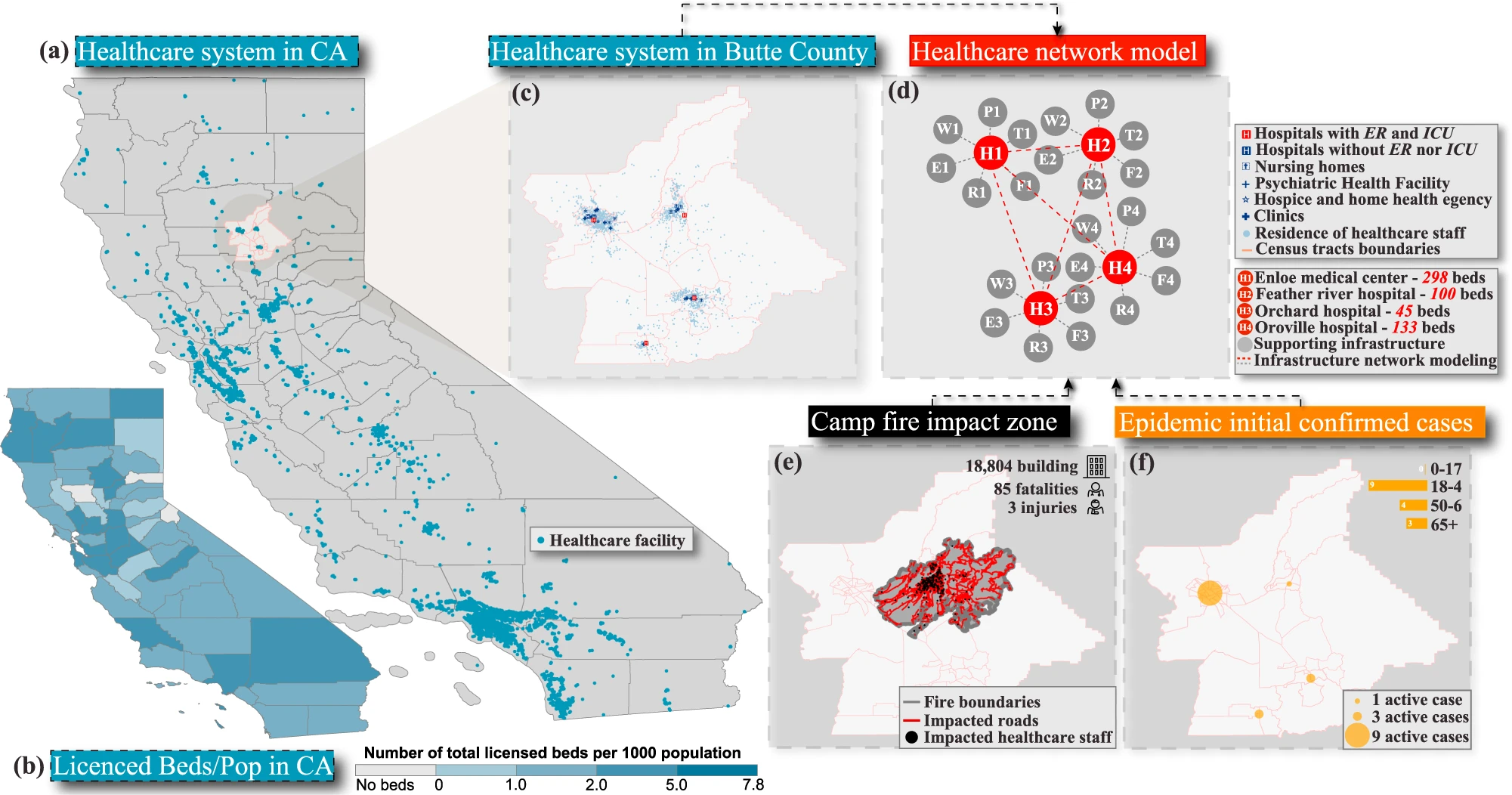

Health care systems could save lives and minimize losses by optimizing resource allocation and implementing mitigation strategies, according to two new studies. Colorado State University researchers explored how our health care systems might perform under multiple disasters and multiple waves of COVID-19, and how we can keep them functioning when we need them most.
In the first study, published in Nature Communications, Civil and Environmental Engineering Ph.D. student Emad Hassan and Associate Professor Hussam Mahmoud investigated the compound effects of pandemics and natural disasters on health care systems. They combined wildfire data with projections of the spread of COVID-19 to evaluate different strategies for managing patient demand in the event of concurrent disasters. They found that better resource allocation and mitigation strategies, such as organized evacuation, protecting shelter residents and using non-acute hospital beds, could result in fewer COVID cases and deaths.
“We showed that applying these measures can substantially reduce disease spread and improve patient outcomes,” Hassan said.


A one-two punch
Wildfires occur every year in the U.S., and they increase the demands on our health care systems. Wildfire smoke victims may require some of the same resources needed by COVID patients, such as ventilators. For these reasons, Hassan and Mahmoud chose to study wildfire in conjunction with the pandemic.
To measure hospital functionality under the simultaneous burdens of pandemic and wildfire, Hassan and Mahmoud used a health care system model they developed previously and a new disease transmission model they created to predict the number of people in different stages of COVID-19. They modified a well-known disease transmission model, SEIR, to include additional stages of the disease.
SEIR stands for Susceptible, Exposed, Infectious and Recovered. The CSU researchers augmented the model to include susceptible, insusceptible, exposed, infective, quarantined, hospitalized, ICU admitted, ventilator-dependent, recovered and deceased.
Bracing for more waves
Using the two models they developed, along with publicly available data on the number and type of beds available in each hospital, Hassan and Mahmoud:
-Calculated the extent of disease transmission under various scenarios in every county in the U.S. -Determined the risk of easing restrictions and the resulting shortage of beds by type – inpatient vs. intensive care, for example. -Identified the counties where patient demand could exceed health care system capacity and presented mitigation strategies that could reduce the number of cases requiring medical services.
Their analysis, published in PLOS One, predicts how additional waves of COVID-19 might unfold.
The study shows that stricter COVID-19 preventive measures – including mask mandates, social distancing, and shutting down schools, workplaces and indoor activities – could reduce the number of hospitalized cases by as much as 12.8%. On the other hand, lifting restrictions could cause a spike in hospitalizations 13.7 times higher than the second wave’s peak – pushing hospitals in many counties beyond their capacity.
“It really is an effective way of reflecting on additional requirements for health care systems to support additional waves,” Mahmoud said.
Hassan and Mahmoud hope planners, policymakers and state officials can use their research to make decisions about additional resources and when to ease restrictions. Their disease transmission model, which predicts how many patients will be in each stage of the disease, could help hospitals allocate resources accordingly.
Odds of a double disaster trending upward Until recently, Hassan and Mahmoud’s research has focused on natural disasters and community resilience. When the World Health Organization declared a global pandemic, they shifted their focus to include pandemics, realizing the loss of life from a pandemic is far greater than the death toll from individual natural disasters.
“The reality of it is pandemics happen more often than extreme events, and the losses are obviously off the charts,” Mahmoud said. “We know it will happen again in 100 years, if not less.”
Hassan and Mahmoud hope their work will help improve health care management in the future, which promises more frequent and more devastating natural disasters with climate change and population growth.
“We’ve got to figure out how we can optimize our societies to handle all these stressors, while continuing to prosper,” Mahmoud said.

